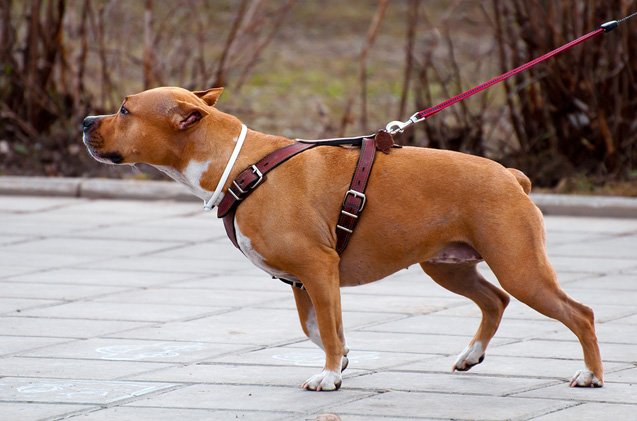A collar is usually the first dog training item used by an owner; thus, it is essential. There are so many collar types available that it’s simple to choose one that matches your dog’s (or your) personality, but collars have roles other than identification and adornment, and not all collars are suited for all dogs.

If you are looking for dog collars, the information provided below may assist you in making an informed decision.
Flat Buckle Collar:
This is the traditional dog collar. It includes a buckle or plastic snap (quick-release) fastening as well as a ring for attaching name badges and leashes, and it comes in a variety of colors and styles. A flat collar should fit comfortably around your dog’s neck; it should not be too tight to suffocate your dog or too loose to allow them to slide out of it, also you should be able to get two fingers below the collar.
Martingale Collar:
Martingale collars are specifically intended to give greater control than regular collars and prevent dogs from sliding or backing out and escaping. These clever dog collars, also known as no-slip dog collars, fit lightly over your dog’s neck and tightens as necessary, such as when your dog pulls or attempts to back out of their collar. These collars resemble standard flat collars but feature a small loop with a connected D-ring up to a third of the length of the collar. These collars are recommended by rescuers, trainers, and ordinary dog owners because they enable greater leash control and help prevent dogs from tugging.
These collars are especially useful for dogs with bigger heads or necks, such as pit bulls. Because martingale dog collars are intended to tighten under low stress, they make it difficult for any dog, regardless of the size or breed, to get loose by pulling out of its collar. A martingale dog collar will ultimately educate your dog not to push or tug on the leash, providing you better control over them.
If you are looking for the best dog collars search dog collars Canada to find the finest one.
Aversive Collar:
In dog behavior words, the “aversive” is anything undesirable that is intended to inhibit or reduce an unpleasant activity. An aversive can be a disagreeable sound, or physical corrections, the discomfort induced by a shock collar or prong collar correction, or a stern scolding. It is regarded as unpleasant if your dog will try to avoid it in the first place or will strive to stop it in the present.
When you use aversive to educate your dog, you’re employing Positive Punishment or Negative Reinforcement techniques. Positive Punishment and Negative Reinforcement are two of operant conditioning’s four quadrants. When trying to influence your dog’s behavior, these two quadrants should be used with caution. Unintended repercussions of these techniques are being shown in studies, including increasing violent behavior, tension, and panic.
When your dog tugs on the leash, for instance, you may use a harsh prong collar punishment. In the future, they are less likely to tug on the leash to escape the pain of the prongs in their neck. It is a good incentive or positive punishment.

Slip Collar:
The typical buckle closure is eliminated from slip collars. They’re made in the shape of a loop. The ring on the opposite end of the collar is connected through one end of the collar. After that, you can effortlessly attach the leash of your preference. When utilizing a slip lead, the collar and leash are linked, thus there is no need for a separate lead. Both with a slip collar and a lead, all it takes is a tiny pull of the leash to correct your dog’s behavior. As the dog attempts to pull or stretch against the leash, the slip collar tightens, putting pressure on the dog’s neck. It enables an aversion training strategy that teaches the dog that his or her conduct is unacceptable.
The dog feels unhappy when the pressure from the slip lead or collar tightens, but it is not harmful. This pressure makes the dog less likely to tug on the leash. Your dog would learn to walk gently with you with enough continuous training. Slip collars and leads are convenient, reliable, and easy to learn.
Head Collar:
The head collar works in the same way as a halter on a horse. One of the collar’s straps wraps over your dog’s neck and fits just behind the ears, high on the head. The other strap encircles your dog’s muzzle in a loop. The muzzle loop’s bottom ring is where the leash is attached.
Strong, active dogs who leap or pull will benefit from the head collar. Because the halter is wrapped around your dog’s muzzle rather than their neck, they lose a lot of strength and can’t pull on the leash with their entire body weight.
The head collar must be correctly adjusted to be effective. The head halter, like any other piece of training equipment, is designed to gently guide your dog in the direction you want them to go, rather than pulling or tugging them. Instructions and a DVD are sometimes included with collars from some manufacturers. Otherwise, get assistance in fitting from your dog trainer or a qualified salesperson. Your dog’s risk of injury should be reduced with proper fit and use.
Spiked Collar:
Spiked dog collars are designed to defend a dog’s most vulnerable part, the neck if it is attacked by a predator or some other dog. Predators attack prey by causing wounds in the most susceptible places of the dog’s body: the esophagus, neck, jaw, and head. One of a dog’s most susceptible places is protected by wearing a heavy, spiked collar. Another benefit of this method of security is that because a predator’s initial action is probably to attack the neck and throat, the spikes will cause harm as soon as the attack begins. The sooner a predator is hurt, the earlier it would be unable to continue attacking the dog.
Here are a few things to bear in mind if you purchasing a spiked dog collar for your dog:
- To avoid injury, you should always remove the spiked collar before letting your dog play with other dogs or children.
- To ensure your dog’s safety, you should never leave him unaccompanied or leashed while wearing the spiked collar. Scratching against the spikes could cause damage to a dog.
Conclusion:
Remember that the ideal situation is for your dog to walk alongside you without tugging or lunging, thus a flat or regular collar should suffice. The other collars on the market are for controlling negative habits that should be changed over time with adequate training. Always seek expert advice before teaching your dog to walk politely on a leash or teaching you how to use any of these gadgets.
